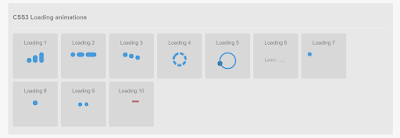HTML Attributes
HTML Attributes
Attributes provide additional information about HTML elements.
HTML Attributes
- All HTML elements can have attributes
- Attributes provide additional information about an element
- Attributes are always specified in the start tag
- Attributes usually come in name/value pairs like: name="value"
The href Attribute
HTML links are defined with the<a>tag. The link address is specified in thehrefattribute:Example
<a href="https://www.google.com/">This is a link</a>You will learn more about links and the<a>tag later in this tutorial.
The src Attribute
HTML images are defined with the<img>tag.The filename of the image source is specified in thesrcattribute:Example
<img src="imagelocation.jpg">The width and height Attributes
HTML images also havewidthandheightattributes, which specifies the width and height of the image:Example
<img src="imagelocation.jpg" width="500" height="600">The width and height are specified in pixels by default; so width="500" means 500 pixels wide.You will learn more about images in our HTML Images chapter.
The alt Attribute
Thealtattribute specifies an alternative text to be used, if an image cannot be displayed.The value of thealtattribute can be read by screen readers. This way, someone "listening" to the webpage, e.g. a vision impaired person, can "hear" the element.Example
<img src="imagelocation.jpg" alt="Girl with a jacket">
The style Attribute
The
style attribute is used to specify the styling of an element, like color, font, size etc.Example
<p style="color:red">This is a paragraph.</p>
You will learn more about styling later in this tutorial, and in our CSS Tutorial.
The lang Attribute
The language of the document can be declared in the
<html> tag.
The language is declared with the
lang attribute.
Declaring a language is important for accessibility applications (screen readers) and search engines:
<!DOCTYPE html>
<html lang="en-US">
<body>
...
</body>
</html>
The first two letters specify the language (en). If there is a dialect, add two more letters (US).
The title Attribute
Here, a
title attribute is added to the <p> element. The value of the title attribute will be displayed as a tooltip when you mouse over the paragraph:Example
<p title="I'm a tooltip">
This is a paragraph.
</p>
We Suggest: Use Lowercase Attributes
The HTML5 standard does not require lowercase attribute names.
The title attribute can be written with uppercase or lowercase like title or TITLE.
Chapter Summary
- All HTML elements can have attributes
- The
titleattribute provides additional "tool-tip" information - The
hrefattribute provides address information for links - The
widthandheightattributes provide size information for images - The
altattribute provides text for screen readersHTML Attributes
Below is an alphabetical list of some attributes often used in HTML, which you will learn more about in this tutorial:Attribute Description alt Specifies an alternative text for an image, when the image cannot be displayed disabled Specifies that an input element should be disabled href Specifies the URL (web address) for a link id Specifies a unique id for an element src Specifies the URL (web address) for an image style Specifies an inline CSS style for an element title Specifies extra information about an element (displayed as a tool tip)
[Related content]
For more this type of content or If you want to know amazing facts , tricks ,tips about technology or you want to learn coding then follow
coder__bhai on instagram

For more this type of content or If you want to know amazing facts , tricks ,tips about technology or you want to learn coding then follow
coder__bhai on instagram



Comments
Post a Comment